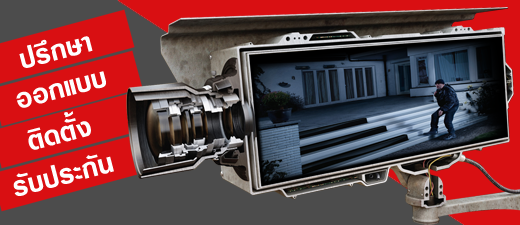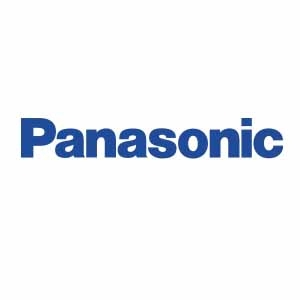หน้าแรก >> CCTV Surveillance
Video’s Critical Role in the Security Plan
1.1 PROTECTION OF ASSETS
The protection of personnel and assets is a management function. Three key factors governing the planning of an assets protection program are: (1) an adequate plan designed to prevent losses from occurring, (2) adequate countermeasures to limit unpreventable losses, and (3) support of the protection plan by top management.
1.1.1 Overview
Most situations today require a complete safety/security plan. The plan should contain requirements for intrusion detection, video assessment, fire detection, access control, and full two-way communication. Critical functions and locations must be monitored using wired and wireless backup communications.
The most significant driving force behind the explosion in the use of closed-circuit television (CCTV) has been the worldwide increase in theft and terrorism and the commensurate concern and need to protect personnel and assets. The terrorist attack on September 11, 2001, brought about a quantum jump and a complete reevaluation of the personnel and asset security requirements to safe-guard a facility. To meet this new threat, video security has taken on the lead role in protecting personnel and assets. Today every state-of-the-art security system must include video as a key component to provide the “remote eyes” for security, fire, and safety.
The fateful day of September 11, 2001, has dramatized the importance of reliable communications and remote visualization of images via remote video cameras. Many lives were saved (and lost) as a consequence of the voice, video, alarm, and fire equipment in place and in use at the time of the fateful attack on the World Trade Center in New York. The availability of operational wired and wireless two-way communication between command and control headquarters and responders (police, fire, emergency) played a crucial role in life and death. The availability (or absence) at command posts of real-time video imagesat crucial locations in the Twin Towers during the attack and evacuation contributed to the action taken by com mand personnel during the tragedy. The use (or absence) of wireless transmission from the remote video cameras in the Twin Towers clearly had an impact on the number of survivors and casualties.
During the 1990s, video components (cameras, recorders, monitors, etc.) technology matured from the legacy analog to a digital imaging technology and became compatible with computers and now forms an essential part of the security solution. In the late 1990s, digital cameras were introduced into the consumer market, thereby significantly reducing price and as a result found widespread use in the security industry. Simultaneously, powerful microprocessors, large hard disk computer memory storage, and random access memory (RAM) became available from the personal computer/laptop industry, thereby providing the computing power necessary to control, view, record, and play back digital CCTV cameras in the security system.
The home run came with the availability and explosive acceptance and use of the Internet (and intranet) as a new means of long distance two-way communication of voice, data, and most importantly video. For over a decade the long distance transmission of video was limited to slow telephone transmission of video images—snap-shots (slowscan video). The use of dedicated high speed (expensive) land lines or expensive satellite communications was limited to government and large-clientele users. Now the Internet provides near-live (near real-time) video transmission communications over an inexpensive, easily accessible worldwide transmission network.
The application and integration of video into safety and security systems has come of age as a reliable, cost-effective means for assessing and responding to terrorist attacks and other life-threatening situations. Video is an effective means for deterring crimes and protecting assets and for apprehending and prosecuting offenders.
Security personnel today have the responsibility for multifaceted security and safety systems in which video often plays the key role. With today’s increasing labor costs and the need for each security officer to provide more functionality, video more than ever before is earning its place as a cost-effective means for improving security and safety while reducing security budgets.
Loss of assets and time due to theft is a growing cancer on our society that eats away at the profits of every organization or business, be it government, retail, service, or manufacturing. The size of the organization makes no difference to the thief. The larger the organization, the more the theft occurs and the greater the opportunity for losses. The more valuable the product, the greater the temptation for a thief to steal it. A properly designed and applied video system can be an extremely profitable investment for an institution to cut losses. The prime objective of the video system should not be the apprehension of thieves but rather the deterrence of crime through security. A successful thief needs privacy—a video system can deny that privacy.
As a security by-product, video has emerged as an effective training tool for managers and security personnel. Every installation/establishment should have a security plan in place prior to an incident. Video-based training is easy to implement using the abundance of inexpensive camcorders and playback equipment available and the commercial video production training video services available. The use of training videos results in standardized procedures and improved employee efficiency and productivity.
The public at large has accepted the use of video systems in most public facilities. Video is being applied to reduce asset losses and increase corporate profits and bottom line. Many case histories show that after the installation of video, shoplifting and employee thefts drop sharply. The number of thefts cannot be counted exactly but shrinkage can be measured. It has been shown that video is an effective psychological deterrent to crime and an effective tool for criminal prosecution.
Theft is not only the unauthorized removal of valuable property but also the removal of information, such as computer software, CDs, magnetic tape and disks, optical disks, microfilm, and hard copy. Video surveillance systems provide a means for successfully deterring such thievery and/or detecting or apprehending offenders. The use of video prevents the destruction of property, vandalizing buildings, defacing elevator interiors, painting graffiti on art objects and facilities, stealing computers, and demolishing furniture or other valuable equipment. Video offers the greatest potential benefit when integrated with other sensing systems and used to view remote areas. Video provides the “eyes” for many security devices and functions such as:(1) fire sensors: smoke detector alarms, (2) watching for presence (or absence) of personnel in an area, (3) evacuation of personnel—determining route for evacuation, access (emergency or intruder) to determine response, respond, and monitor response. When combined with fire and smoke detectors, CCTV cameras in inaccessible areas can be used to give advance warning of a fire.
Video is the critical link in the overall security of a facility but organizations must develop a complete security plan rather than adopt piecemeal protection measures. To optimize use of video technology, the practitioner and end user must understand all of its aspects—from light sources to video monitors and recorders. The capabilities and limitations of video during daytime and nighttime operation must also be understood.
















